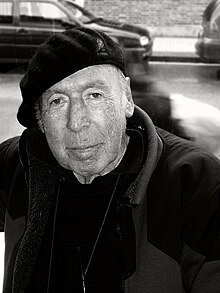Mikel Laboa
| Mikel Laboa | |
|---|---|

Laboa in 2007
|
|
| Background information | |
| Birth name | Mikel Laboa Mancisidor |
| Born |
15 June 1934 Donostia-San Sebastián, Gipuzkoa, Spain |
| Died | 1 December 2008 (aged 74) Donostia-San Sebastián, Gipuzkoa, Spain |
| Occupation(s) | Singer-songwriter, musician |
| Years active | 1958–2006 |
Mikel Laboa Mancisidor (15 June 1934 – 1 December 2008) was one of the Basque Country's most important singer-songwriters.
Considered the patriarch of Basque music, his music has had an influence on younger generations. A testament to this is the tribute album Txerokee, Mikel Laboaren Kantak ("Cherokee: Songs of Mikel Laboa"), published in 1991 by various younger-generation rock and folk music groups. His album Bat-Hiru ("One-Three") was chosen in a reader poll by the local Diario Vasco newspaper as the greatest Basque album in history. Nearly all of his songs are sung in Basque.
Mikel Laboa was born 15 June 1934 in Pasaia, Gipuzkoa.
He spent nearly two years of his childhood in the town of Lekeitio, Bizkaia. In the 1950s he studied medicine and psychiatry in Pamplona-Iruña. He would constantly balance his artistic career with his medical career, which began at the Children's Neuropsychiatry unit at Patronato San Miguel in San Sebastián, where he worked for almost 20 years.
During his student years he became interested in music, influenced by artists such as Atahualpa Yupanqui and Violeta Parra. Following in their footsteps, Laboa would likewise identify himself as a "political artist." In 1958 he made his debut at the Teatro Gayarre in Pamplona.
During the 1960s he, along with other Basque artists, founded the cultural group Ez Dok Amairu ("There is no 13"), which in many ways sought to revitalize Basque culture, long dormant under the Francoist regime. They dedicated their focus on the revival and social status of the Basque language. Within this group Laboa came into his own, emerging along with Benito Lertxundi as a prime example of what was called "new Basque music."
...
Wikipedia
